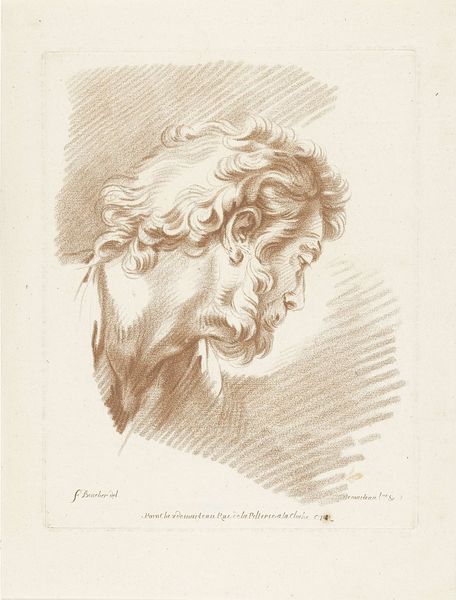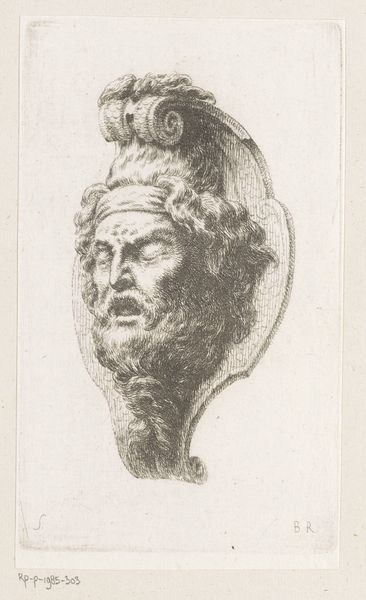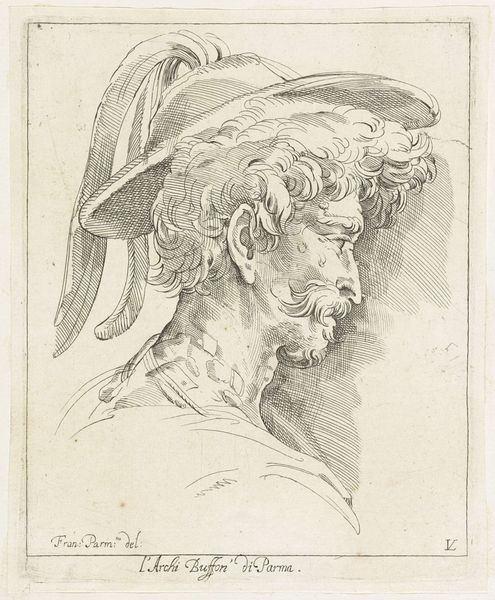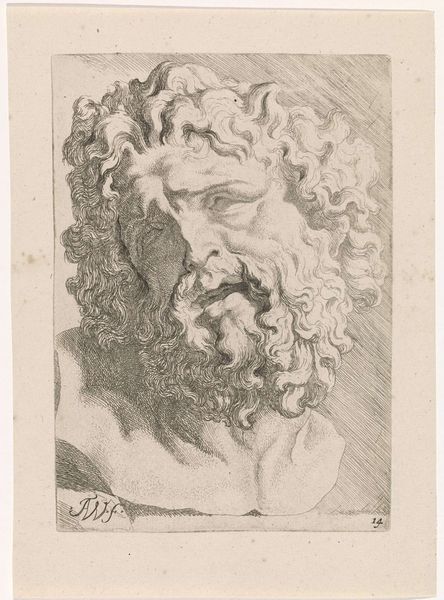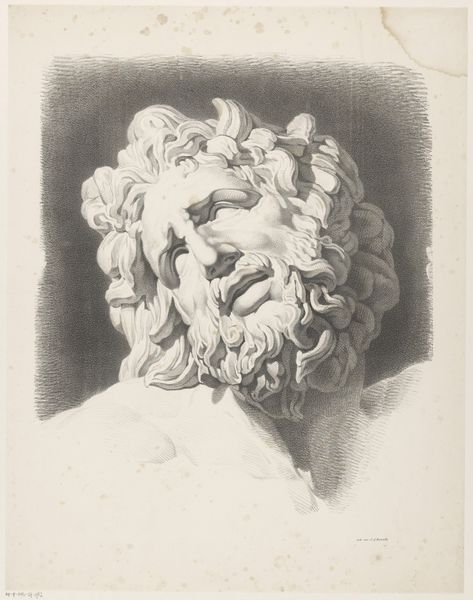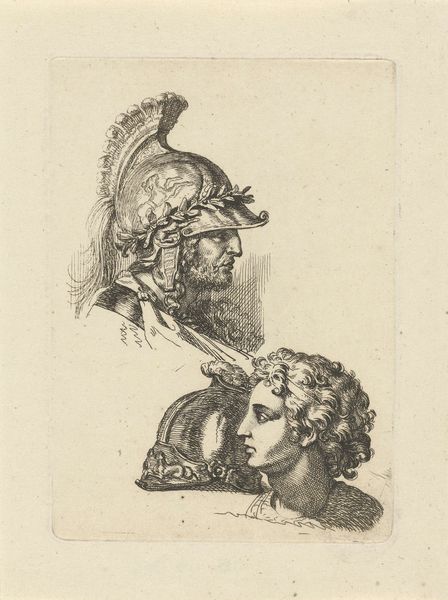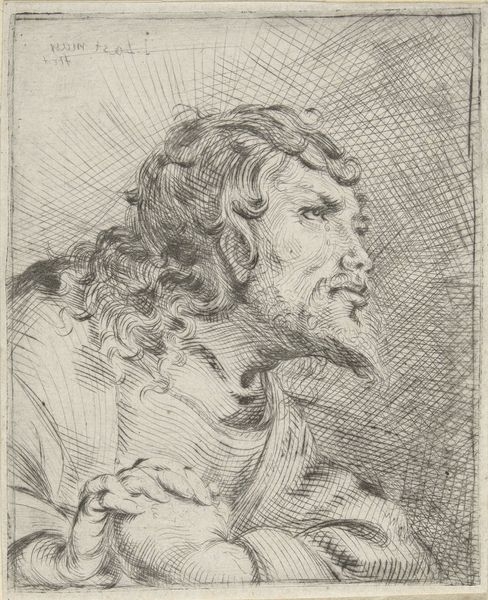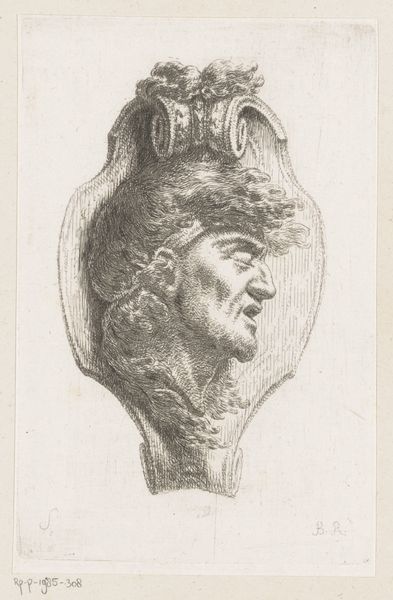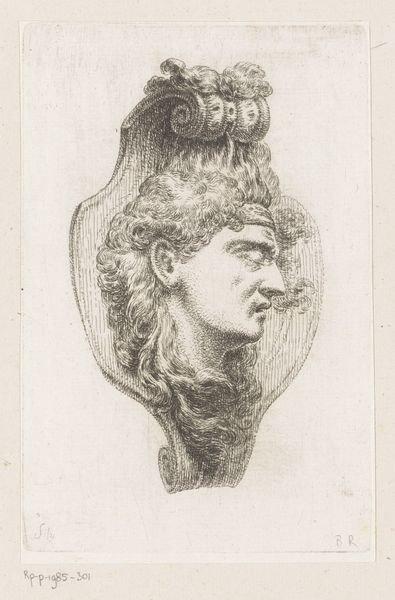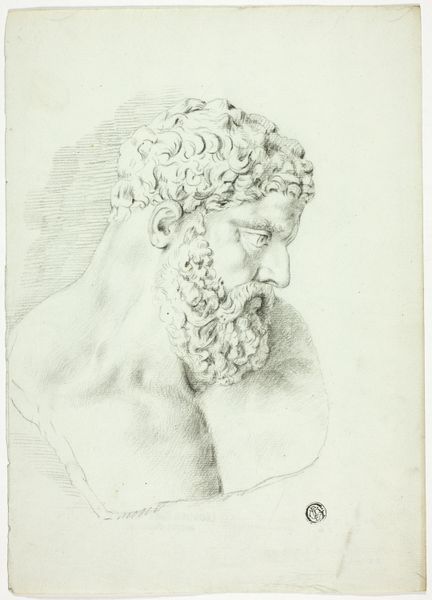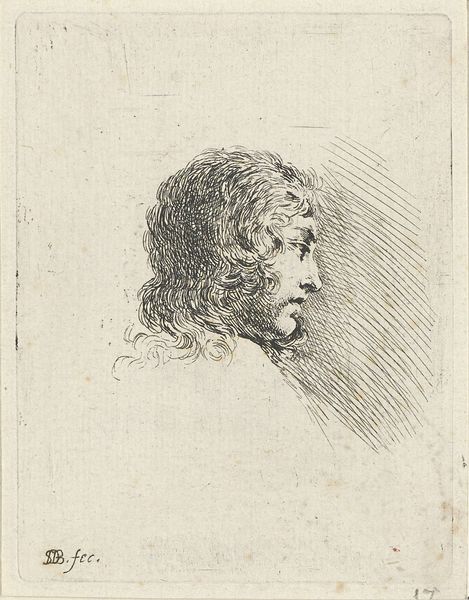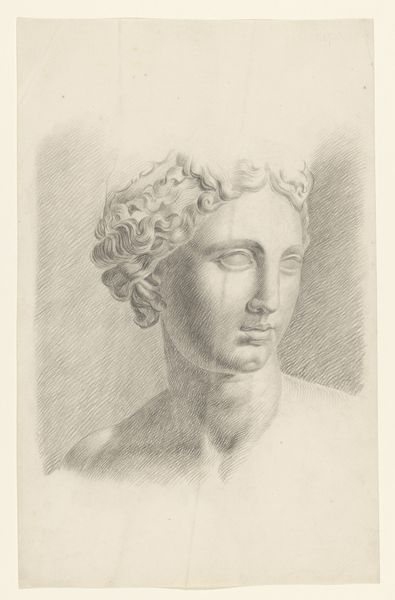
drawing, print, etching
#
portrait
#
drawing
# print
#
etching
#
etching
#
pencil drawing
Dimensions: height 285 mm, width 220 mm
Copyright: Rijks Museum: Open Domain
Editor: So here we have "Head of a Satyr," an etching made sometime between 1732 and 1776 by Gilles Demarteau. The brown ink gives it a warm feeling, but the satyr himself looks kind of…melancholy. What’s your take? Curator: Melancholy is interesting! It makes me think, why a satyr, and why this expression? Demarteau wasn't just pulling this out of thin air, was he? He was channeling a whole history of representing these mythological creatures. Are satyrs merely figures of revelry and chaos, or is there something more lurking in their shadowed glances? Look at the direction of lines. Notice how the shading is mostly on the background. What would you say is more illuminated in this work? Editor: Well, the satyr, clearly. Curator: Precisely! Doesn’t that emphasize a focus on his features, making us examine his very being? The leaves entwined in his hair hint at nature, the wild, the Dionysian... But that downturned gaze... that says something else, doesn't it? Editor: It does make you wonder what he's thinking. Maybe it's the weight of all that revelry catching up to him! Curator: Exactly! This work offers a meditation on the duality of existence. The earthy and the divine, revelry and sorrow, animalistic impulse and self-awareness... What is a Satyr beyond our basic understanding? The ambiguity is the key, isn't it? Editor: Definitely gives me a new perspective. I always thought of satyrs as just party animals, but this one’s got layers. Thanks! Curator: My pleasure! It’s delightful to stumble upon these hidden narratives woven into even the most seemingly straightforward depictions. Makes one wonder about the narratives we each carry within us, doesn't it?
Comments
No comments
Be the first to comment and join the conversation on the ultimate creative platform.
